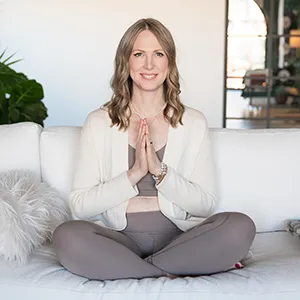Are You Breathing Wrong? The Key Is In The Exhale. (Part 2)
Jun 02, 2025I don’t know about you, but I’ve heard “Take a big breath” as a suggestion for how to calm down and take a beat. This typically means a big inhale. But here’s the thing—that can actually make you feel more agitated, as it can signal more up-regulation of your nervous system. The difference? If your body interprets this as a cue of safety, you can shift from “fight or flight” or “shutdown” to “play” or “rest and digest”.
Here’s the catch: if you don’t practice deep breathing, this may not work well for you. Like any skill, breathwork gets better with practice. Think of it like trying to touch your toes for the first time in years—it takes consistency. But the real way to calm your system down? Take a BIG exhale.
Why is the exhale so important?
Why is it the exhale? What makes it so special? It increases lung capacity by helping the diaphragm dome up and achieve a better Zone of Apposition (ZOA)—yes, that’s the real term for it. The diaphragm needs to fully relax and dome up against the ribs so that it can then fully contract.
Think of your diaphragm moving like a jellyfish. When it relaxes, it domes up, and when it contracts, it flattens out—just like a jellyfish pulsing in the ocean. Your ribcage alignment plays a big role here. If your ribcage is splayed forward or hunched over, it interferes with your diaphragm’s ability to dome properly. In other words, your posture matters.
Your breath as a tool for regulating your nervous system
Breathing can help you access your nervous system. Short, shallow breaths can be energizing—or send you into fight or flight (or play, if you’re feeling safe). Long, deep breaths are relaxing and can down-regulate you into the “rest and digest” parasympathetic state.
- Short, shallow breaths are energizing—but they can also increase anxiety and push you into fight or flight.
- Long, deep breaths are relaxing and help you down-regulate into rest and digest.
Important note: Up-regulation isn’t the bad guy—it’s often just given the wrong job. It’s like using a fire alarm as a morning alarm clock. Helpful? Not so much. Necessary in emergencies? Absolutely.
Anxiety or Excitement?!
I’m going to go out on a limb here and assume we all don’t need help breathing our way into anxiety—or more anxiety. Funny thing about anxiety: it’s basically excitement without the safety of play. Instead, there’s a negative spin or a feeling of being unsafe.
Anxiety and excitement are like identical twins—one’s just wearing a “This is fine” t-shirt while the other is sweating through their clothes at a job interview. Knowing that intellectually doesn’t always help, but practicing play and finding joy can shift how we experience those sensations.
Here’s a magic trick: it only takes three deep breaths to create a neutral experience—so you can respond instead of just react, ultimately giving you more control over whether you up-regulate or down-regulate. Healing is more likely to occur in the rest-and-digest state. So yes, you can promote healing with every breath you take.
Dimmer Switch for the Win
A well-regulated nervous system moves between these states fluidly—like a dimmer switch, not an on-off switch. The key isn’t avoiding up-regulation—it’s using it in a way that serves you. Up-regulation isn’t meant for pushing through deadlines; it’s designed to keep you safe from, say, a wild bear.
Another shameless plug for practice: the more time you spend in any given state, the easier it is to get there—and stay there.
The good news? You don’t need a lot of fancy breathing techniques. Just understanding the basics allows you to breathe more optimally every day, in every situation. Your breath can support your needs—whether it’s calming down, moving with more ease, or running.
Try This: A Simple Breathwork Technique
Want to try it? Inhale for a count of 4 and exhale for a count of 8—like you’re slowly blowing out birthday candles. For a little help lengthening your exhale, try breathing out into a boba or milkshake straw to get every last drop of breath out.
Curious to try breathing with a straw? Watch the video below and practice alongside me. Let’s make exhaling the way to feel at home in your body again.
Stay Connected
Learn to move and live with ease in a pain-free body:


